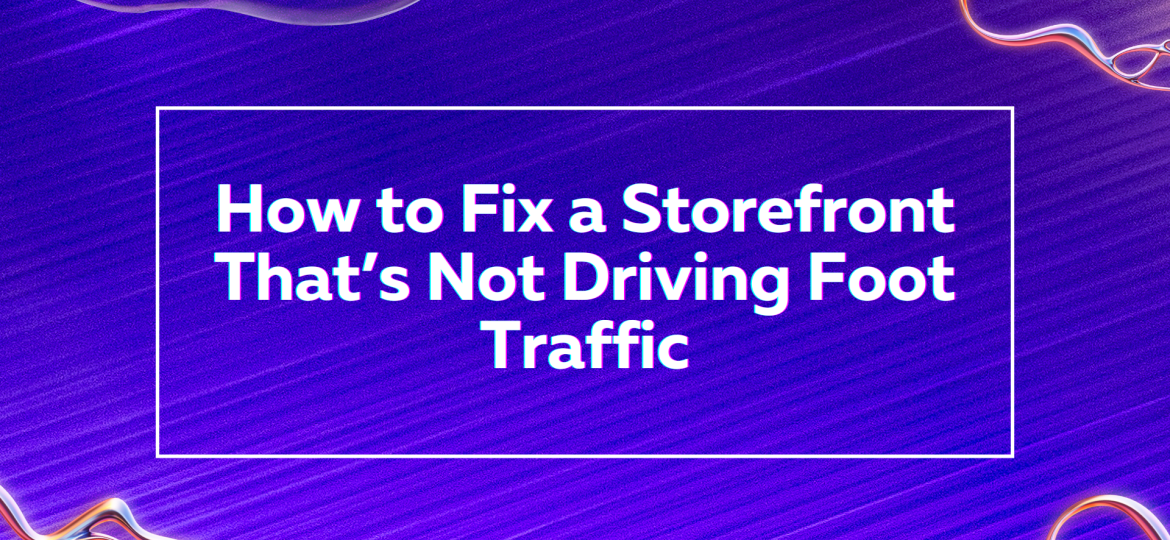How to Fix a Storefront That’s Not Driving Foot Traffic
The Storefront Problem You’re Probably Ignoring
You’ve optimized your signage. Your interior looks great. You’re in a decent location with steady foot traffic. But people still walk by without walking in.
This isn’t just frustrating, it’s expensive! In retail, your storefront is your first (and often only) chance to earn someone’s attention.
So why isn’t it working?
Because attention in 2025 is a scarce currency. And most storefronts are built for a visual world that no longer exists.
Let’s break down what’s going wrong and how you can fix it with one strategic shift.
1. What’s Killing Your Curb Appeal
Before fixing it, you need to spot the problem. Here’s what’s likely working against you:
- Static Signage Fatigue: Flat visuals don’t stop distracted pedestrians.
- Outdated Displays: Traditional window dressing doesn’t stand out anymore.
- Lack of Motion or Interaction: Nothing visually signals that your brand is “alive” or interesting.
- Predictable Messaging: Promotions and posters that look like every other store nearby.
Even LED screens, which were once novel, now blend into the visual clutter. If your storefront feels invisible, it probably is.
2. Why 3D Holographic Displays Change the Game
Now, enter 3D holographic fan displays.
These aren’t sci-fi gimmicks. They’re practical tools that create floating, animated visuals in mid-air. Think spinning shoes, levitating coffee cups, animated logos, projected right in your window.
And here’s what makes them different:
- They interrupt visual patterns. People stop walking.
- They feel interactive. Customers lean in, record, and share.
- They create a reason to engage before anyone steps inside.
Brands using 3D storefront displays are seeing a measurable uptick in foot traffic, social shares, and dwell time. That’s not theory! It’s field-tested in competitive markets like Toronto.
3. Real-World Use Cases: How Businesses Are Doing It Right
Here’s how smart retail owners are transforming bland storefronts into people magnets:
- Boutiques are displaying rotating 3D models of their top-selling products.
- Cafés are projecting steam-rising coffee cups and floating menu items to passersby.
- Tech shops are using holograms to demo internal features of new gadgets, without anyone touching the product.
And because 3D displays run on a loop and can be updated digitally, they’re easier to maintain than traditional setups.
4. Quick Fix Checklist: How to Get Foot Traffic Back
Here’s how to implement 3D holographic advertising effectively:
- Choose a high-visibility location: Inside your window or just above eye level.
- Keep content dynamic: Think movement, contrast, and brand personality.
- Update messaging often: Promote new arrivals, daily deals, or seasonal offers.
- Pair it with a simple CTA: “Step inside to see it live” or “Limited drop today.”
5. Why Ignoring This Means Losing Sales
Foot traffic isn’t random. It’s earned.
And if your storefront isn’t stopping people in their tracks, it’s not working hard enough.
In 2025, businesses that fail to adapt visually will keep losing to brands that innovate how they present themselves, even before a single purchase is made.
3D holographic advertising doesn’t just fix foot traffic problems, it resets the way people see your brand. Literally.
Make Your Storefront Unmissable:
If you’re done watching customers walk past without walking in, it’s time to rethink your visual strategy. At Creativ Buzz, we help retail businesses turn overlooked storefronts into bold brand experiences.
Let’s make yours one of them.




